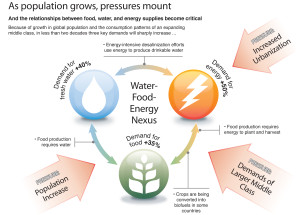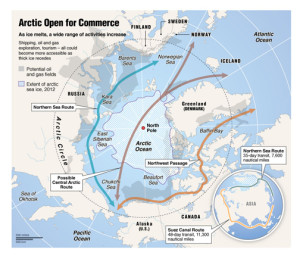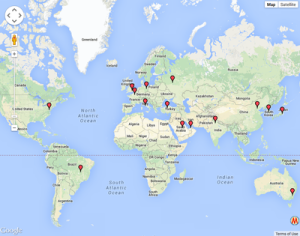What you will find on this page: LATEST NEWS; climate changes and (US) security issues; REPORT: Conflict vs Climate; cost of sanctioned violence (video); trends in military spending; climate change as a stressor; security & national interests (video); REPORT: Combat vs Climate; sanctioned violence; battle for resources
Latest News 14 September 2015, UC3M, Analyzing the Keys to Environmental Mobilization through Social Networks. Recognizing an opportunity, defining a clear message and reacting; these are the three keys to the success of environmental campaigns on social networks, according to research by Universidad Carlos III de Madrid (UC3M) and INGENIO, a joint center of the Universidad Politécnica de Valencia and CSIC, which also received an international award for the best article about entrepreneurship. Nobody has the precise formula for the success of social media viral campaigns, but there are examples of how they work. By taking as a reference point a Facebook environmental mobilization strategy which had a great impact, the researchers have developed a theoretical framework to help understand some of the keys to success. They have focused specifically on the work of the photographer Chris Jordan and the social media consultant Manuel Maqueda who together, have launched a social movement against plastic pollution and have gained two million followers for their cause. This movement has managed to change regulations governing this issue in over fifty countries. To achieve this, and to demonstrate the negative impact of plastic on our society, they used shocking images of young birds, poisoned by ingesting pieces of plastic. Read More here 14 September 2015, Climate News Network, Southern Ocean starts to soak up carbon again. Scientists report that the great oceanic “lung” is again breathing in vast amounts of carbon dioxide from the atmosphere – but can’t say why or whether it will last. The high seas have begun to respond again to the changes in the atmosphere, with two new studies confirming that the Southern Ocean is absorbing more atmospheric carbon. Levels of carbon dioxide in the atmosphere have been steadily increasing as humans burn ever more fossil fuels, but climate scientists will probably hesitate before exhaling sighs of relief over the latest findings. Rising CO2 in the atmosphere means global warming, which means climate change, melting ice caps, rising sea levels − and even more global warming and climate change. So the discovery that one great stretch of hostile ocean is soaking up more of the stuff sounds like very good news. However, the celebrations are likely to be cautious, as there is no guarantee that the process is permanent. Read More here 11 September 2015, The Conversation, Ignored by the government, shrunk by resignations – where now for Australia’s Climate Change Authority? Bernie Fraser’s resignation as chairman of Australia’s Climate Change Authority has left many wondering what is left of it and what its future might be. Established three years ago as part of the climate change package negotiated by the previous parliament’s Multi-Party Climate Change Committee, the Authority was formed to serve as the principal source of climate policy advice to the federal government, particularly on the issue of emissions targets. Championed by the then Greens deputy leader Christine Milne, it was modelled closely on Britain’s Committee on Climate Change. The Authority is legislated to have nine part-time members, including the Chief Scientist ex officio. When the Abbott government was elected two years ago it expressed its intention to abolish the Authority along with the rest of the Labor government’s climate policy architecture. Unlike the former Climate Commission, which had a public education role (and since losing government backing has morphed into the independent Climate Council), the Authority was established by legislation as a statutory authority. The government could not obtain sufficient support in the Senate to abolish the Authority. In particular, Palmer United Party leader Clive Palmer struck a deal with the government in which he would support thecarbon tax repeal but not the abolition of the Climate Change Authority. With the Authority saved, Palmer said he wanted the government to instruct it to assess whether Australia should have an emissions trading system at some time in the future, and what conditions should trigger its introduction, taking special note of the policies of Australia’s major trading partners. The government agreed to Palmer’s request to extend funding for the Authority. Continued funding was essential in order to sustain the Authority’s secretariat, based in Melbourne, which at its peak reached around 35 but now stands at around 25. On its formation the Authority attracted some of the best and brightest to work for it. Read More here 11 September 2015, The Independent, Refugee crisis: Is climate change affecting mass migration? John Kerry painted an apocalyptic vision of climate change last week as he addressed a global warming conference in Alaska. “You think migration is a challenge in Europe today because of extremism, wait until you see what happens when there’s an absence of water, an absence of food, or one tribe fighting against another for mere survival,” the US secretary of state warned. Few experts would argue with Kerry’s analysis of the future, but some would argue his vision is already upon us. The current refugee crisis marks a watershed moment in the history of global warming because it’s the first wave of emigration to be explicitly linked to climate change, according to one leading scientist, who predicts rises in temperature and increasingly extreme weather will unleash many more mass movements of people in the future. Professor Richard Seager acknowledges that there is much more to the Syrian uprising than the climate, but says that global warming played a key role in creating the conditions that fuelled the civil war behind the refugee emergency. “Syria was destabilised by 1.5 million migrants from rural communities fleeing a three-year drought that was made more intense and persistent by human-driven climate change, which is steadily making the whole eastern Mediterranean and Middle East region even more arid,” says Professor Seager, of Columbia University in New York, who published a report into the role of climate change in the Syrian conflict in March. Read More here Beyond the fighting and fanaticism, another long-term threat menaces the world’s troubled regions. End Latest News US/DNI Releases Report on Implications of Climate Change on National Security Since man first became aware of his neighbours “resources” war or more precisely “sanctioned violence” has been the mechanism for obtaining from others what you believe should be rightly yours. The battle for resources is not new and continues unabated in our supposed “civilised” world of today. With all the misery, lost lives, displaced peoples, wasted resources that war produces climate change has now added to this already complex mess. And as pressure builds to keep fossil fuels in the ground the battles to access and use them more apparently goes on. A bit like Golum and his “precious”…..What on earth are they thinking! There are many direct and indirect ramifications of war – all of which distract/undermine the capacity of the global community to respond in a concerted and positive way to the pandora’s box of climate change. Source: Center for Naval Analysis The cost of sanctioned violence Environmental Costs: The impact of the wars in Iraq, Afghanistan and Pakistan can be seen not only in the social, economic and political situations of these areas but also in the environments in which these wars have been waged. The long years of war have resulted in a radical destruction of forest cover and an increase in carbon emissions. In addition, the water supply has been contaminated by oil from military vehicles and depleted uranium from ammunition. Along with the degradation of the natural resources in these countries, the animal and bird populations have also been adversely affected. Read More here And what has this to do with climate change? It is adding to the problem. Human Costs: UNHCR’s annual Global Trends report, which is based on data compiled by governments, non governmental partner organizations, and from the organization’s own records, shows 51.2 million people were forcibly displaced at the end of 2013, fully six million more than the 45.2 million reported in 2012. “We are seeing here the immense costs of not ending wars, of failing to resolve or prevent conflict,” said UN High Commissioner for Refugees Antonio Guterres. “Peace is today dangerously in deficit. Humanitarians can help as a palliative, but political solutions are vitally needed. Without this, the alarming levels of conflict and the mass suffering that is reflected in these figures will continue.” Read More here. Access Global Emergency Overview here. Civilians Killed and Wounded:The ongoing conflicts in Iraq, Afghanistan and Pakistan have taken a tremendous toll on the people of those countries. At the very least, 174,000 civilians have been determined to have died violent deaths as a result of the war as of April 2014. The actual number of deaths, direct and indirect, as a result of the wars are many times higher than this figure. And what has this to do with climate change? It is often stated that the “vulnerable” are the ones that will suffer the most in facing the impacts of climate change as they have not the resources or resilience to adapt or “bounce back”. The futility of war has literally placed over 50 million people, to date, into this vulnerable category and have denied them the opportunity to be part of the solution. A loss that the rest of the world must cover. Economic Costs: A quote from James Madison, Political Observations, 1795: “Of all the enemies to public liberty war is, perhaps, the most to be dreaded because it comprises and develops the germ of every other. War is the parent of armies; from these proceed debts and taxes … known instruments for bringing the many under the domination of the few.… No nation could preserve its freedom in the midst of continual warfare.” Nothing much has changed in 200+ years has it? Trends in World Military Expenditure 2014 Source: From 13 April 2015 the SIPRI Military Expenditure Database includes newly released information on military expenditure in 2014. This Fact Sheet describes the global, regional and national trends in military expenditure that are revealed by the new data. Look at the following map of the 15 leaders in military expenditure – and what questions come to your mind? Access map for further details here Trends in World Military Expenditure 2014 A sign of things to come? Climate change impacts becoming a “stressor” in conflicts Did Drought Trigger The Crisis In Syria? What caused the conflict in Syria to erupt when it did, pushing citizens from discontent with the regime to outright rebellion? One possibility is that environmental factors, particularly a long-lasting drought, helped ignite the crisis. Drought affected north-eastern Syria (as well as adjacent regions in Turkey and Iraq) from 2006 to 2011 and resulted in widespread food insecurity, malnutrition, internal displacement from agricultural areas, and the creation of shanty towns on the edges of cities. Read More here National/global security issues and climate change If the deniers want us to believe that climate change is a fabrication and it isn’t a problem then they forgot to convince those “looking after” the security interests of governments. Following are a number of reports that indicate that they are treating climate change as a high profile security issue. From the Center for Naval Analysis. In the videos below, CNA Corporation Military Advisory Board (MAB) members discuss the new report, National Security and the Accelerating Risks of Climate Change. In the first video, Brigadier General Gerald Galloway details how climate change impacts American national security and military readiness, affecting the lives of thousands of military personnel and American civilians around the U.S. In the second video, Admiral Frank “Skip” Bowman emphasizes how climate change is already impacting our national security and international military dynamics. The work of the MAB has been important in advancing the understanding that energy choices are not future threats—they are taking place now—and that actions to build resilience against the projected impacts of climate change are required today. US: National Security and the Accelerating Risks of Climate Change (2014): As a follow-up to its landmark 2007 study on climate and national security, the CNA Corporation Military Advisory Board’s National Security and the Accelerating Risks of Climate Change re-examines the impact of climate change on U.S. national security in the context of a more informed, but more complex and integrated world. The Board’s 2007 report described projected climate change as a “threat multiplier.” In this report the 16 retired Generals and Admirals who make up the board look at new vulnerabilities and tensions posed by climate change, which, when set against the backdrop of increasingly decentralized power structures around the world, they now identify as a “catalyst for conflict.” US 2014 Quadrennial Defense Review: A rather chilling document (a quote: ” The rapidly accelerating spread of information is challenging the ability of some governments to control their populations and maintain civil order.”) Note risk of climate change exec summary and pages 8 & 25. The impacts of climate change may increase the frequency, scale, and complexity of future missions, including defense support to civil authorities, while at the same time undermining the capacity of our domestic installations to support training activities… Climate change poses another significant challenge for the United States and the world at large…. Climate change may exacerbate water scarcity and lead to sharp increases in food costs. The pressures caused by climate change will influence resource competition while placing additional burdens on economies, societies, and governance institutions around the world. These effects are threat multipliers that will aggravate stressors abroad such as poverty, environmental degradation, political instability, and social tensions – conditions that can enable terrorist activity and other forms of violence.….The Department’s operational readiness hinges on unimpeded access to land, air, and sea training and test space. Consequently, we will complete a comprehensive assessment of all installations to assess the potential impacts of climate change on our missions and operational resiliency, and develop and implement plans to adapt as required. Climate change also creates both a need and an opportunity for nations to work together, which the Department will seize through a range of initiatives. We are developing new policies, strategies, and plans, including the Department’s Arctic Strategy and our work in building humanitarian assistance and disaster response capabilities, both within the Department and with our allies and partners. War – Sanctioned Violence/ protecting national security interest Thus, we take another step deeper into the tragedy of U.S. intervention in the Middle East that has become a noxious farce. Consider just one of the head-spinning subplots: We are allied with our declared enemy, Iran, against the bloody Islamic State, which was spawned from the chaos created by our own earlier decisions to invade Iraq and to overthrow the Assad regime in Syria, which has us fighting side-by-side with jihadist crazies financed by Saudi Arabia, whom we are supporting against the Houthis in Yemen, the bitter rivals of Al Qaeda — the perpetrators of 9/11! Read More here NOTE: For those readers that have got this far, if you wish to explore further the dysfunction of our world you may need to include the vast implications of organised crime and corporate and political corruption and the implications for climate change response as well. Climate change and national security issues
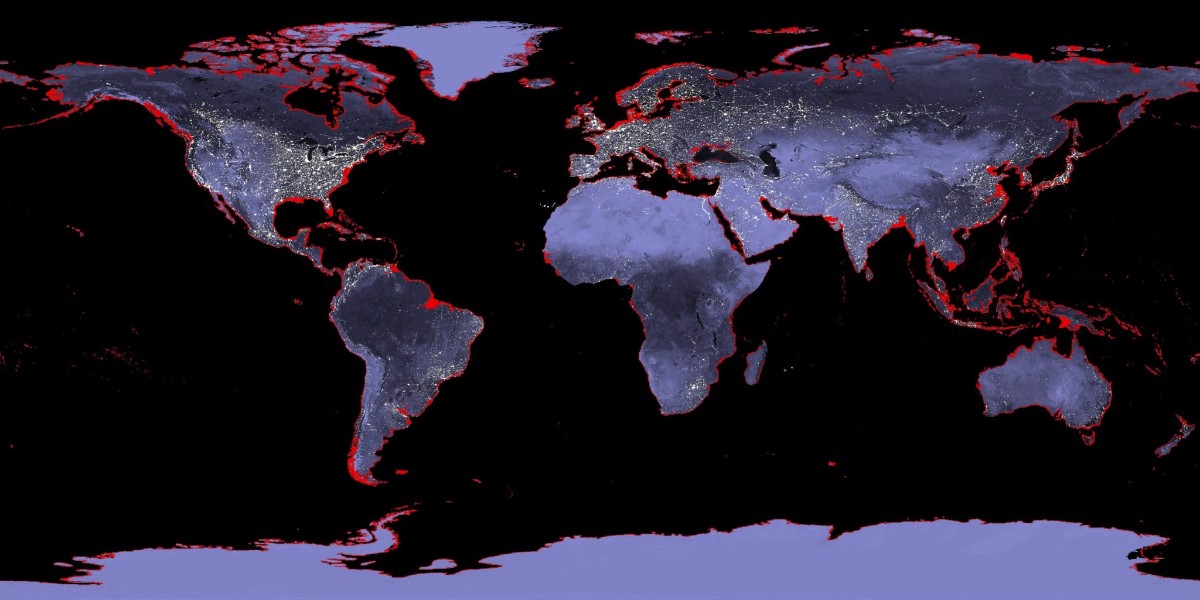 19 September 2016, American Security Project: The National Intelligence Council, part of the Office of the Director of National Intelligence, has just released a new White Paper titled “Implications for U.S. national security of Anticipated Climate Change.” The report analyzes the potential effects of climate change on national security in the coming 20 years. The report uses previous IPCC reports as a scientific baseline for analysis. The report begins with a strong assertion of the dangers of climate change for societies, economies, and governments across the world: t goes on to list some of the pathways to “wide-ranging national security challenges for the United States and other countries,” including “threats to the stability of countries, adverse effects on food prices and availability, and negative impacts on investments and economic competitiveness.” The report gives possible time-frames for these emerging national security challenges, suggesting that based on “changing trends in extreme weather,” the future will almost certainly hold more “climate related disruptions.” The majority of climate change-related risks to U.S. national security in the next five years will come from “distinct extreme weather events”, and “the exacerbation of currently strained conditions,” including water shortages. The report comes after years of significant research inside and outside of the government on climate security. The National Intelligence Council last released a report on this issue in 2009. Many in the security community have spoken on the emerging national security risks posed by climate change. ASP and countless other organizations have urged policy makers not to underestimate the security challenges posed by climate change and the rising seas. Read More here and access full report here
19 September 2016, American Security Project: The National Intelligence Council, part of the Office of the Director of National Intelligence, has just released a new White Paper titled “Implications for U.S. national security of Anticipated Climate Change.” The report analyzes the potential effects of climate change on national security in the coming 20 years. The report uses previous IPCC reports as a scientific baseline for analysis. The report begins with a strong assertion of the dangers of climate change for societies, economies, and governments across the world: t goes on to list some of the pathways to “wide-ranging national security challenges for the United States and other countries,” including “threats to the stability of countries, adverse effects on food prices and availability, and negative impacts on investments and economic competitiveness.” The report gives possible time-frames for these emerging national security challenges, suggesting that based on “changing trends in extreme weather,” the future will almost certainly hold more “climate related disruptions.” The majority of climate change-related risks to U.S. national security in the next five years will come from “distinct extreme weather events”, and “the exacerbation of currently strained conditions,” including water shortages. The report comes after years of significant research inside and outside of the government on climate security. The National Intelligence Council last released a report on this issue in 2009. Many in the security community have spoken on the emerging national security risks posed by climate change. ASP and countless other organizations have urged policy makers not to underestimate the security challenges posed by climate change and the rising seas. Read More here and access full report here
10 November 2015, Yale Connections: Drought, water, war, and climate change” is the title of this month’s Yale Climate Connections video (above) exploring expert assessments of the interconnections between and among those issues. With historic 1988 BBC television footage featuring Princeton University scientist Syukuru (“Suki”) Manabe and recent news clips and interviews with MIT scientist Kerry Emanuel, Ohio State University scientist Lonnie Thompson, CNN reporter Christiane Amanpour, and New York Times columnist and book author Tom Friedman, the six-minute video plumbs the depths of growing climate change concerns among national security experts. Source: Yale Connections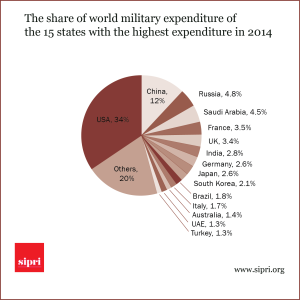 Total world military expenditure in 2014 was $1776 billion. This is equivalent to 2.3 per cent of global GDP. According to the SIPRI Military Expenditure Database, Australia is ranked at number 13 as the biggest spender for 2014.Total Australia spending AUD29.3 billion ($b.,MER) 25.4. Share of GDP 1.8%. Share of world military expenditure 1.4%
Total world military expenditure in 2014 was $1776 billion. This is equivalent to 2.3 per cent of global GDP. According to the SIPRI Military Expenditure Database, Australia is ranked at number 13 as the biggest spender for 2014.Total Australia spending AUD29.3 billion ($b.,MER) 25.4. Share of GDP 1.8%. Share of world military expenditure 1.4%
And what has this to do with climate change? It goes with out saying that responding to climate change and transforming the energy and economic systems of the world in a carbon restricted world would be made a lot easier on everyone if military budgets were focused on what could help the world rather than plunder it. 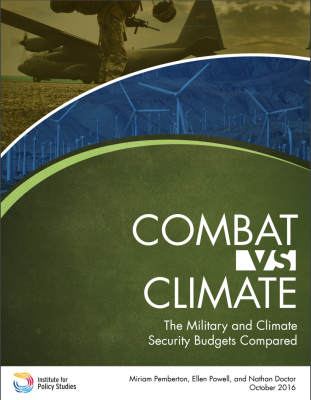 5 October 2016. The Military and Climate Security Budgets Compared. Fifteen of the sixteen hottest years ever recorded have occurred during this new century, and the near-unanimous scientific consensus attributes the principal cause to human activity. The U.S. military’s latest National Security Strategy says that climate change is “an urgent and growing threat to our national security, contributing to increased natural disasters, refugee flows, and conflicts over basic resources like food and water.” What they don’t say is that the overall balance of U.S. security spending should be adjusted to fit that assessment. And we know less about how much we are spending on this urgent threat than we used to, since the federal government hasn’t produced a climate security budget since 2013. In this new report, Combat vs. Climate, the Institute for Policy Studies steps in to provide the most accurate climate change security budget currently available, drawing data from multiple agencies. And it looks at how these expenditures stack up within our overall security budget. Then, the report ties the military’s own assessment of its urgent threats to a budget that outlines a “whole of government” reapportionment that will put us on a path to averting climate catastrophe. This is our status quo: As global temperatures hit one record after another, the stalemate in Congress over funding to respond continues. Climate scientists warn that, as in Syria, unless the global greenhouse gas buildup is reversed, the U.S. could be at risk for conflicts over basic resources like food and water. Meanwhile, plans to spend $1 trillion to modernize our entire nuclear arsenal remain in place, and projected costs of the ineffective F-35 fighter jet program continue to climb past $1.4 trillion. Unless we get serious about moving the money, alarms from all over about the national security dangers of climate change will ring hollow. Access article here. Access report here.
5 October 2016. The Military and Climate Security Budgets Compared. Fifteen of the sixteen hottest years ever recorded have occurred during this new century, and the near-unanimous scientific consensus attributes the principal cause to human activity. The U.S. military’s latest National Security Strategy says that climate change is “an urgent and growing threat to our national security, contributing to increased natural disasters, refugee flows, and conflicts over basic resources like food and water.” What they don’t say is that the overall balance of U.S. security spending should be adjusted to fit that assessment. And we know less about how much we are spending on this urgent threat than we used to, since the federal government hasn’t produced a climate security budget since 2013. In this new report, Combat vs. Climate, the Institute for Policy Studies steps in to provide the most accurate climate change security budget currently available, drawing data from multiple agencies. And it looks at how these expenditures stack up within our overall security budget. Then, the report ties the military’s own assessment of its urgent threats to a budget that outlines a “whole of government” reapportionment that will put us on a path to averting climate catastrophe. This is our status quo: As global temperatures hit one record after another, the stalemate in Congress over funding to respond continues. Climate scientists warn that, as in Syria, unless the global greenhouse gas buildup is reversed, the U.S. could be at risk for conflicts over basic resources like food and water. Meanwhile, plans to spend $1 trillion to modernize our entire nuclear arsenal remain in place, and projected costs of the ineffective F-35 fighter jet program continue to climb past $1.4 trillion. Unless we get serious about moving the money, alarms from all over about the national security dangers of climate change will ring hollow. Access article here. Access report here.

